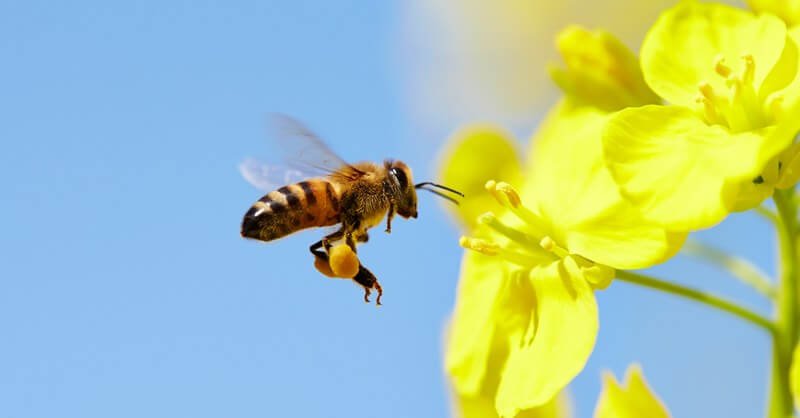Bees have experienced substantial colony losses, which were often associated with insecticides. Besides synthetic insecticides biological compounds such as spinosad are used in agriculture and organic farming against insect pests. However, potential adverse effect at sublethal concentrations to pollinators are poorly known. Here we aimed to determine potential adverse outcome pathways of spinosad and to identify molecular effects by investigating transcriptional alterations in the brain of honey bees.
[Editor’s note: Some environmental activists allege that synthetic pesticides, particularly neonicotinoid insecticides, harm honeybees, though there is little evidence to support that claim. Much less attention has been paid to the possible impact of natural pesticides like spinosad on bees.]
We experimentally exposed bees to three sublethal concentrations, 0.05, 0.5 and 5 ng spinosad/bee, and assessed transcriptional alterations of target genes. Additionally, we evaluated whether spinosad-induced transcriptional alterations were influenced by the time of the year. In April, alterations were most pronounced after 24 h exposure, while in June alterations were similar but occurred mostly after 48 h. In July, expressional alterations were lower.
Down-regulation of genes encoding acetylcholine receptors, enzymes involved in oxidative phosphorylation (cox5a, ndufb-7 and cox17), cytochrome P450 dependent monooxygenases (cyp9q1, cyp9q2 and cyp9q3) and insulin-like peptide-1 were among the most significant transcriptional alterations. This suggests adverse effects of spinosad to energy production and metabolism and thus negative consequences on foraging. Together, our study indicates that spinosad causes adverse effects at environmentally realistic concentrations and may harm bee populations.
Read full, original article: Biopesticide spinosad induces transcriptional alterations in genes associated with energy production in honey bees (Apis mellifera) at sublethal concentrations (Behind paywall)































